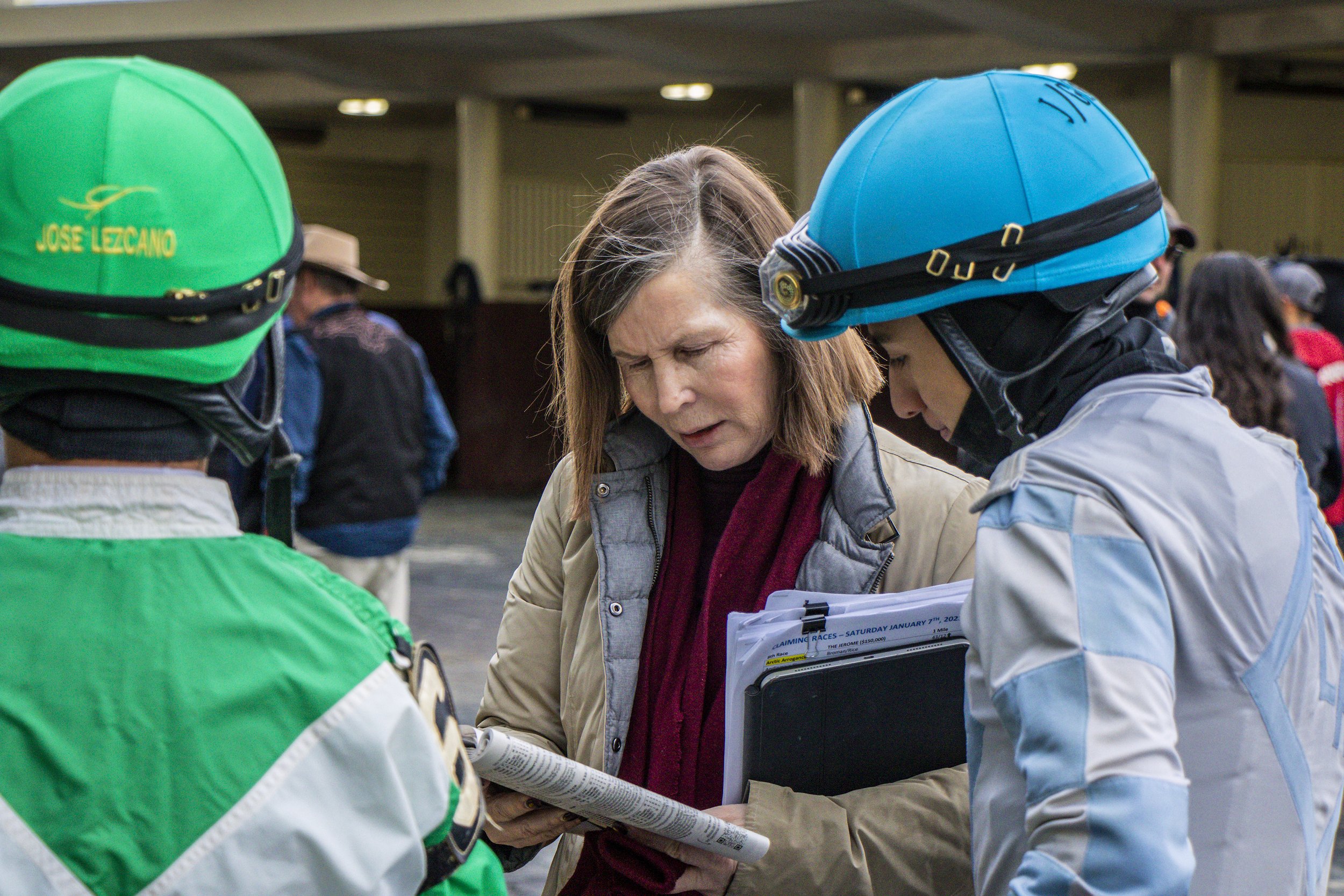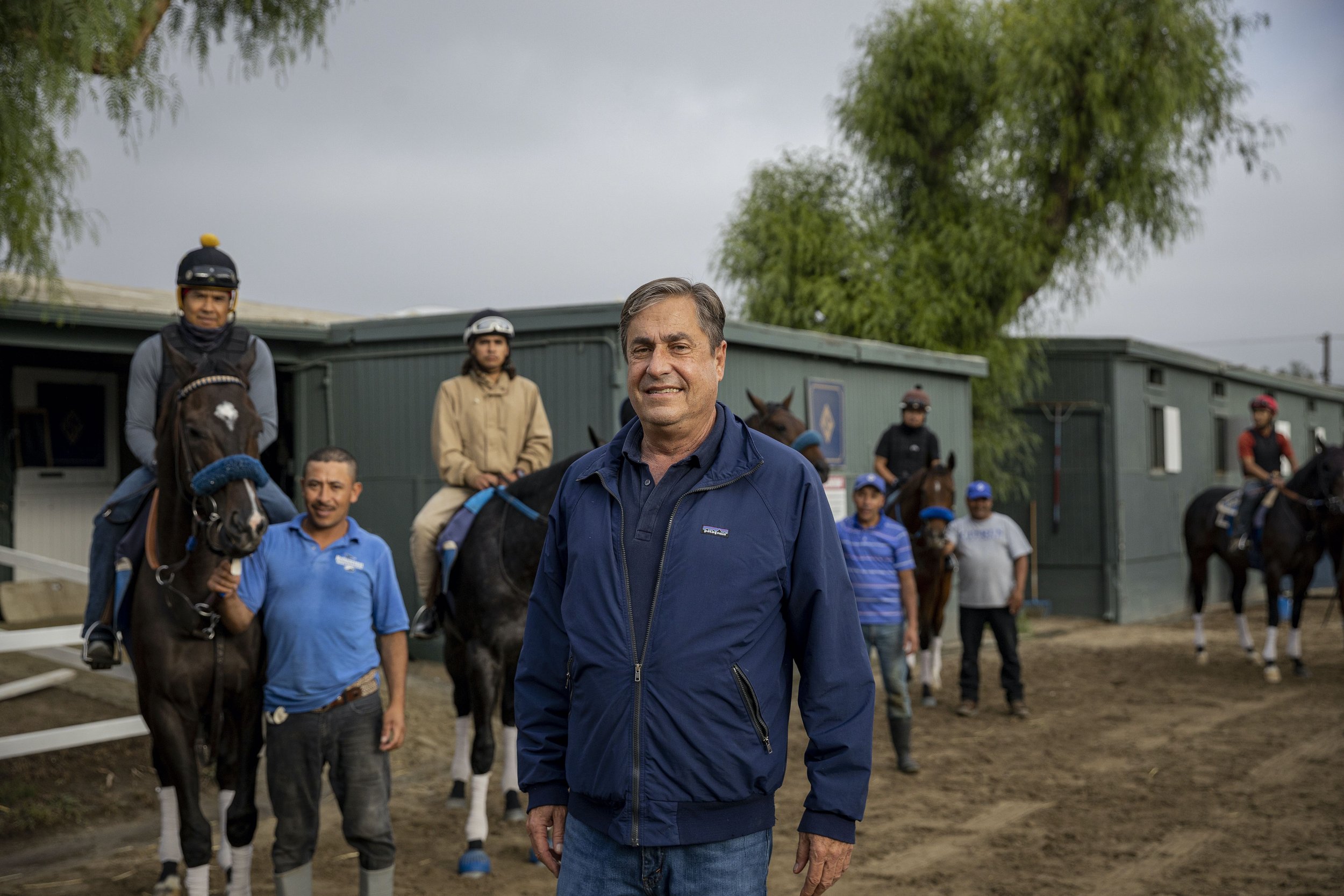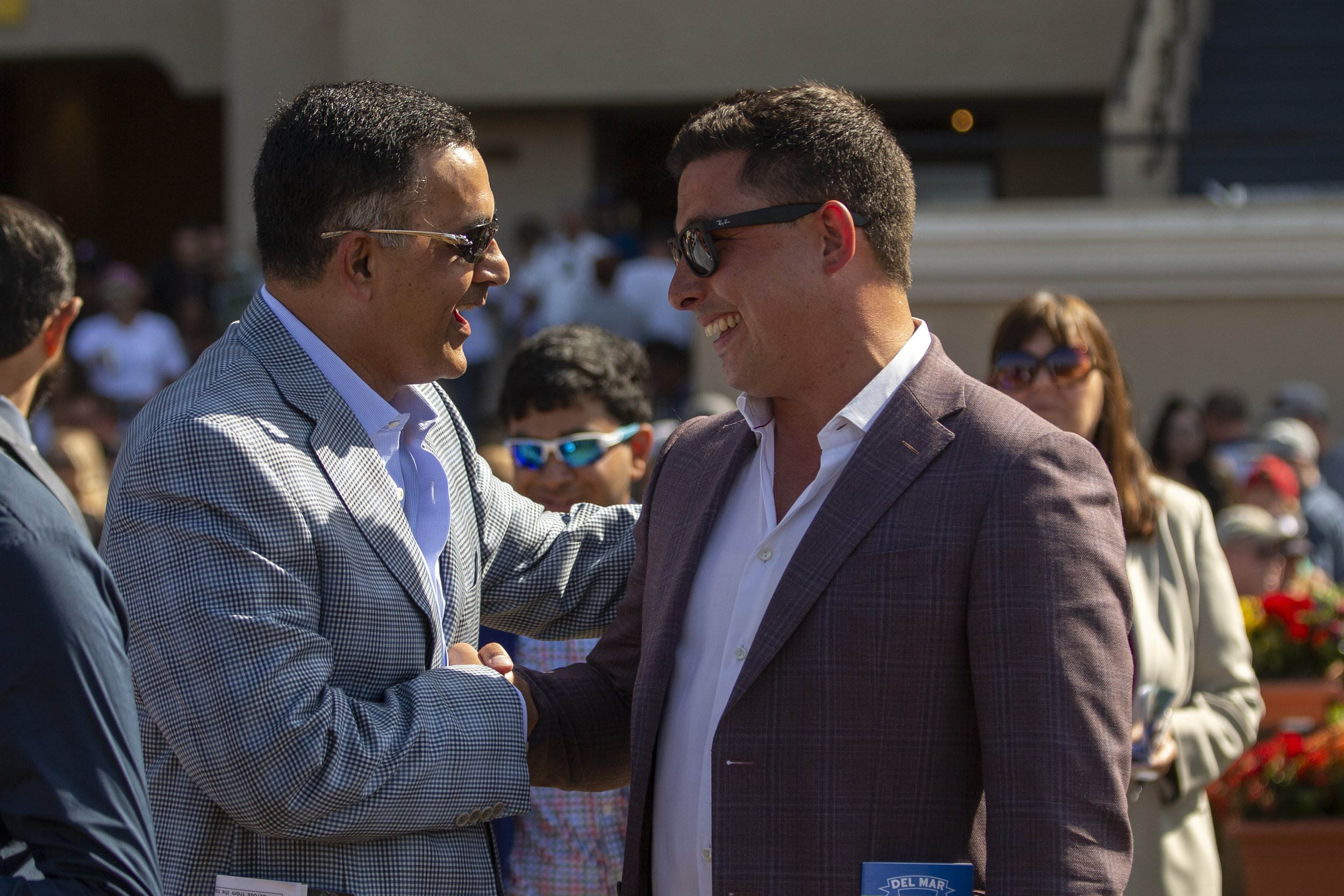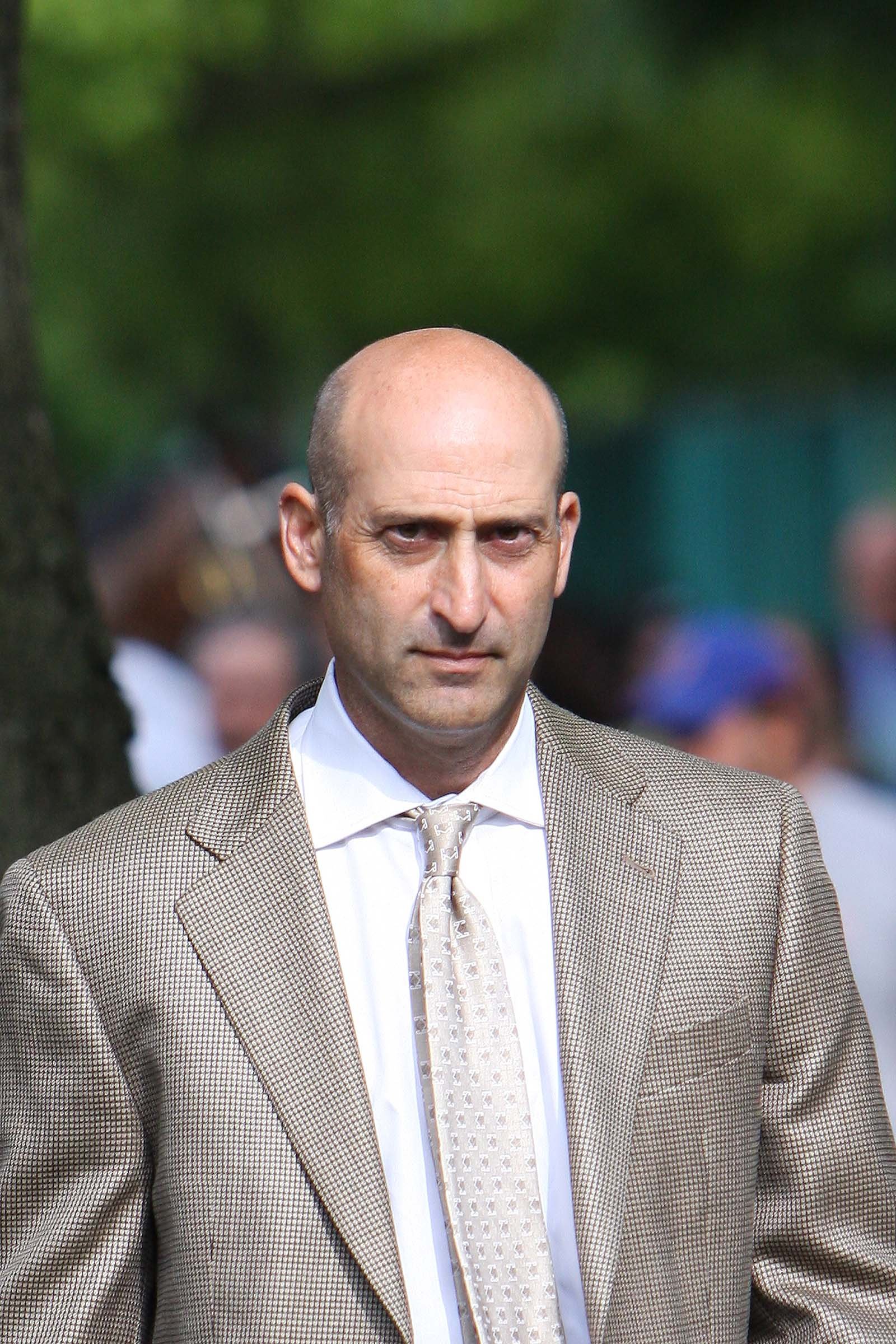#Soundbites - What do you look for when you evaluate a yearling at sales, and are there sire lines that influence your opinions?
Linda Rice
Linda Rice
I look for a good shoulder, and usually that will transcend into a great walk, an athletic walk. I do that for the length of stride. I like to buy young mares. Of course I have preference for some stallions I have had success with like City Zip. And then stallions everybody likes: sons of Into Mischief, sons of Curlin, sons of McLain’s Music. I’ve done well with them. If they have a great shoulder and a great walk, I’ll take a shot on an unproven stallion.
Brad Cox
The first thing, from a physical standpoint, is you have to consider his size. Is he too big or too small? As far as sire lines, you’re looking for signs. You totally have to have an idea what the yearling will look like. Will he look like his sire? You pay attention.
Graham Motion
Graham Motion
I think many of us get influenced by stallions’ progeny that we have trained before. There are other ones that we avoid if we haven’t done well with a sire’s prodigy. I think the one thing I look for is athleticism in general. I’m not overly critical of conformation.
John Sadler
John Sadler
We’re looking primarily for dirt pedigrees for California. I have a good idea what works here, what doesn’t work here. Obviously, I’m partial to some of the sires I trained, Twirling Candy, Accelerate, and Catalina Cruiser who’s off to a very fast start. On the conformation side, I look for a well-conformed horse that looks like an athlete. As an experienced trainer, you look for any little things. You learn what you can live with or without. Then, obviously, I’m looking for Flightlines in a couple of years!
Simon Callaghan
Simon Callaghan
Generally, I’m looking for an athlete first and foremost. Conformation and temperament are two major factors. Yes, there are sire lines I like—not one specific one. Certainly it’s a relatively small group.
Tom Albertrani
Tom Albertrani
I’m not a big sales guy, but when I do go, I like to look at the pedigree first. Then I look for the same things as everyone else. Balance is important. I like to see a horse that’s well-balanced, and I like nicely muscle-toned hindquarters.
Michael Matz
One of the things, first of all, is I look at the overall picture and balance. We always pick apart their faults, then what things that are good for them. You look for the balance, then if they’re a young yearling or an older yearling. Those are some of the things I look at. If you like one, you go ahead. There are certain sires if you have had luck with them before. It all depends on what the yearling looks like. I would say the biggest things I look at are their balance and their attitude. When you see them come out and walk, sometimes I like to touch them around the ear to see how they react to that. That shows if they’re an accepting animal.
#Soundbites - trainers - horses had the fewest number or average starts per year - smallest field size
By Bill Heller
The new Jockey Club Fact Book showed 2019’s average field size dropped again to 7.24, and 2019’s starts per runner dropped again to 5.96. Both numbers are the lowest since at least 1950. Does that concern you?
Todd Pletcher
It does concern me. There’s a concern that today’s horses aren’t as durable as they were in the past. We need increased field size to increase handle. That’s a worry. But we also want to try to lessen breakdowns, and trainers are spacing races out more to make sure their horses are ready to run an optimal performance. We found over the years that horses, especially after hard races, need more time. It’s a complicated issue. It’s a constant learning curve. Each horse is different. Certainly we see that when we approach Triple Crown races for three-year-olds.
Neil Drysdale
Neil Drysdale
It does, obviously. It keeps contracting. We know that from the foal crops. It leads to us to say we should have less racing to get better field size. I think it will happen. When I started, we didn’t have year-round racing. Racing has been proliferating, but the boutique meets have done so well: Keeneland, Del Mar, Saratoga, Hot Springs.
Tom Albertrani
Tom Albertrani
It’s interesting to hear statistics about it. Am I concerned? I don’t think so. I think we’re still a pretty strong industry. I know there’s been a lot of smaller fields the last couple of years.
Ron Moquett
Ron Moquett
Not where I’m at. I go to the track at Remington Park, Oaklawn Park and Keeneland. They offer some of the largest field sizes there are. If you look it up, I think Remington is No.1, and Oaklawn is No. 2. That’s where I race most of my horses. I like bigger fields for handicappers to bet on. It’s easier to win races when they’re less, but I like people to see big fields with good horses.
Tony Dutrow
Yes. No. 1, I’m not surprised. It’s been alarming me for a number of years. Horses are not as sound. The reasons for the drop in starts, in my opinion, is that racing’s become enormously commercial. When I was so much younger, more breeders bred horses to race them much more than they do today. The people that have the funds fuel this game. The people who fuel the game need good broodmares. Then they breed them to a successful stallion. They spend a lot of money. And then they’re going to sell that horse at a sale. They’re not going to keep that horse running in the field with his buddies. That has a lot to do with why horses have less starts.
John Shirreffs
John Shirreffs
It does not really concern me. When I first was working on the racetrack as a hotwalker/ponyboy, Laffit Pincay was just beginning to ride. The rumor was that if you use him, you wouldn’t be able to run your horse again for 30 days because he got everything out of the horse. Now all the jockeys are like Laffit. Jockeys are now fitter, stronger and ride harder from gate to wire. I think the horses are asked to do more, so recovery takes a little longer. Horses are also carrying a lot more weight than they ever did. There used to be weight allowances. Look at the scale of weights. Much higher.
Wayne Catalano
Of course it concerns me. We’re running out of horses. We’re not breeding as many horses as we used to. I don’t know the numbers, but it’s finally catching up with us. Field size is handle, right? We get paid by the handle.












